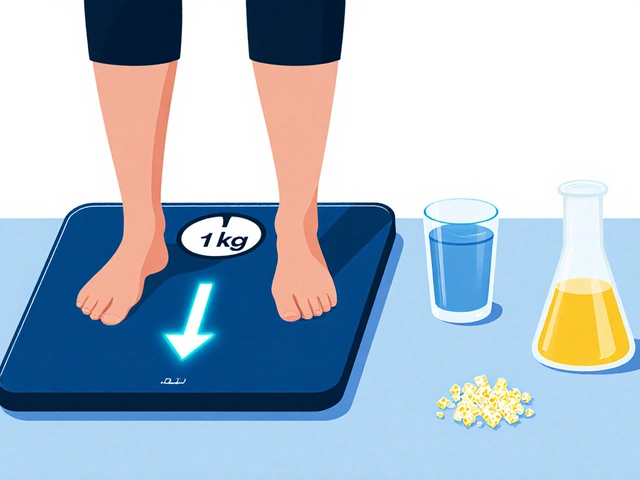Citalopram: An Easy Guide to This Common Antidepressant
When you see Citalopram, a prescription medication that belongs to the selective serotonin reuptake inhibitor (SSRI) class. Also known as Celexa, it is widely used to treat mood disorders. It Citalopram works by blocking the reabsorption of Serotonin, a neurotransmitter that influences mood, sleep, and appetite in the brain, thereby raising the amount of serotonin available to nerve cells. This mechanism makes it a member of Selective serotonin reuptake inhibitors (SSRIs), a group of drugs that increase serotonin levels to improve mood and anxiety symptoms. Because serotonin shortfall is a hallmark of Depression, a medical condition marked by persistent low mood, loss of interest, and fatigue, Citalopram is often a first‑line choice for clinicians. The drug also interacts with other substances; understanding Drug interactions, situations where two medications affect each other's effectiveness or safety is crucial for safe use.
In everyday practice, Citalopram is prescribed in a once‑daily tablet, typically starting at 10 mg and may be increased to 20 mg or 40 mg depending on response and tolerance. Most patients notice a gradual lift in mood within 2–4 weeks, although full therapeutic effect can take up to eight weeks. Common side effects include mild nausea, dry mouth, and occasional insomnia—often fade as the body adapts. A smaller group experiences sexual dysfunction or heightened anxiety during the early weeks; these symptoms usually improve with dose adjustment or a short treatment break. Because Citalopram has a relatively long half‑life, missed doses are less likely to cause sudden withdrawal, making it a forgiving option for busy schedules.
Safety Checks, Interactions & Who Should Take Extra Care
Before starting Citalopram, doctors check liver function, heart rhythm, and existing medication list. The drug can prolong the QT interval, a heart electrical pattern, especially at doses above 40 mg, so patients with known heart conditions or those on other QT‑prolonging agents need closer monitoring. Combining Citalopram with monoamine oxidase inhibitors (MAOIs), certain anti‑arrhythmics, or tramadol can raise the risk of serotonin syndrome—a potentially serious condition marked by agitation, high fever, and rapid heart rate. Alcohol isn’t a strict contraindication, but heavy drinking can worsen side effects like dizziness and sedation.
Pregnant or breastfeeding individuals should discuss risks versus benefits with their provider, as Citalopram crosses the placenta and appears in breast milk in small amounts. Older adults often start at lower doses because they metabolize the drug more slowly, reducing the chance of confusion or falls. Genetic factors, especially variations in the CYP2C19 enzyme, can influence how quickly Citalopram is broken down; some people may need dose tweaks based on personal response. Regular follow‑up appointments help track improvements, catch side effects early, and adjust the regimen as needed.
With a clear understanding of how Citalopram fits into the broader category of SSRIs, its impact on serotonin, and the safety considerations that accompany its use, you’re ready to dive deeper. Below you’ll find detailed articles that break down specific topics—ranging from dosage guides and side‑effect management to real‑world comparisons with other antidepressants. These resources will give you the practical insights you need to make informed decisions about treatment and stay ahead of any challenges that may arise.

Celexa (Citalopram) vs Top Antidepressant Alternatives: Pros, Cons & Costs
A detailed side‑by‑side comparison of Celexa (citalopram) and its most common alternatives, covering efficacy, side effects, cost, and how to pick the right drug.
View More




